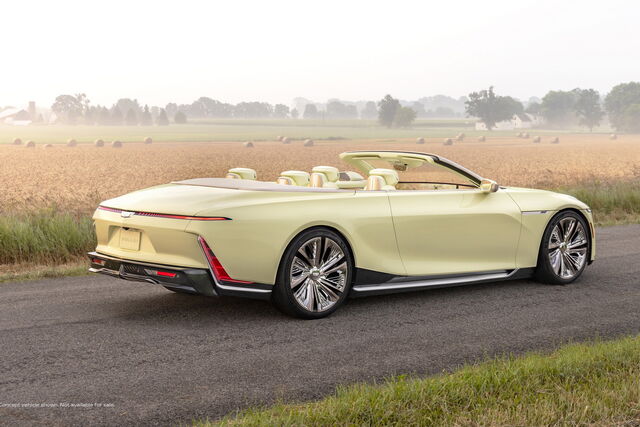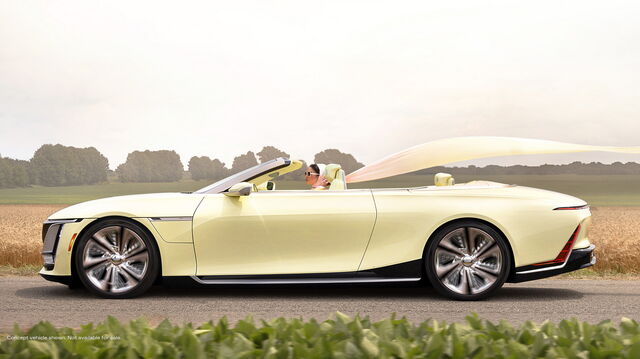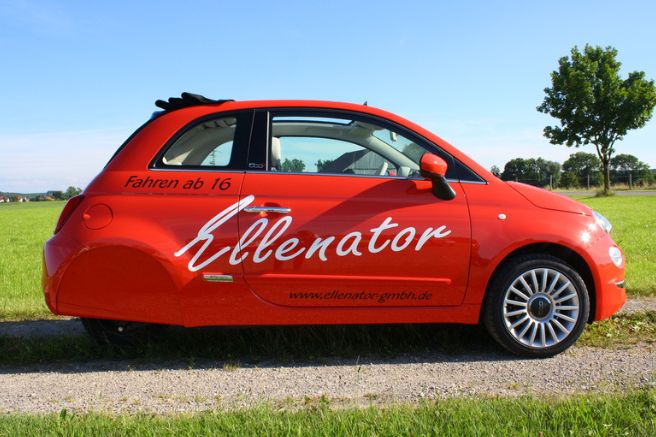
The convertible car represents the most genuine image of the Cadillac brand, which the General Motors group uses to dominate the luxury sedan segment. Iconic models like the “Eldorado,” produced from 1953 to 2002, are known for their majestic front ends paired with equally imposing rear ends, characterized by fins and tailfins that are unimaginable on any modern vehicle. However, Cadillac has not offered a convertible worthy of its past glory since 2009. This gap may soon close as the brand aims to re-enter this representative segment with a luxurious electric supercar derived from the “Celestiq.” This supercar is Cadillac’s vision of luxury and exclusivity within the battery-electric vehicle market.
This is merely a hypothesis, but it becomes more plausible given the level of craftsmanship showcased by the convertible concept Cadillac “Sollei,” presented last July. This four-seater measures five and a half meters long and two meters wide, featuring a clean and elegant design despite the car’s exaggerated dimensions. Targeted at a wealthy clientele—the current “Celestiq” starts at $300,000, and “Sollei” would likely be priced even higher—it also appeals to those who appreciate opulence that can sometimes border on gaudiness. However, in this case, the car’s impressive body remains fluid, clean, and linear, resulting in an elegant and refined appearance.

The panels made from carbon fiber and the large yet lightweight doors are supported by General Motors’ “Ultium” platform, an aluminum spaceframe comprising aluminum profiles interconnected by rigid nodes. This structure is suspended on adaptive pneumatic suspension connected to the platform through multilink architectures controlled by magnetorheological dampers. These systems contain a fluid made up of a mixture of magnetic particles suspended in oil that align to alter the fluid’s rheological properties and, consequently, the dampers’ response when a magnetic field is applied. This allows for real-time modulation of the suspension’s elastic responses based on the vehicle’s functional state, the type of surface it’s moving on, and the driving style set by the driver.
The suspension also features active anti-roll bars and a system at the rear that allows the wheels to steer up to three and a half degrees to enhance stability and smoothness while driving. It is worth noting that Cadillac has not released the technical specifications for “Sollei,” choosing instead to focus public attention on its stylistic and functional elements. However, much of what has been described is largely predictable as it draws on the advanced features of the “Celestiq,” from which much of “Sollei’s” mechanics are derived.

It makes sense, therefore, that this convertible also adopts the all-wheel-drive system utilizing two electric motors, one for each axle, delivering an estimated combined power of 600 horsepower and 870 Nm of torque. These units are powered by an 111-kilowatt battery that can be charged using 200-kilowatt DC chargers. Like all modern electric vehicles, the powertrain incorporates the “One-Pedal Driving” system, which maximizes regenerative braking and stops the car without using the traditional brake system. It also includes Level 2 ADAS that allows the onboard computers to manage the vehicle’s progress while driving straight on the highway.
The interiors are richly appointed, featuring a stunning 55-inch high-resolution screen divided into two sections, allowing the driver to view operational data and trip information without hindering the passenger’s ability to control the onboard infotainment system based on Google’s operating system. In addition to this mega monitor, there are four other screens, two of which are reserved for rear passengers, totaling eight display systems. Lastly, the climate control system, known as “Gentherm ClimateSense,” manages 33 devices, including ventilation ducts, while the audio system operates through 38 speakers and includes an “Active Road Noise Compensation” feature.
Title: Cadillac “Sollei”, luxury in an American way
Translation with ChatGPT



